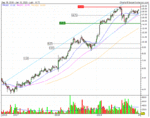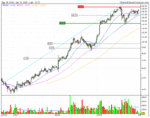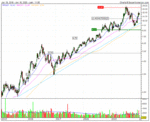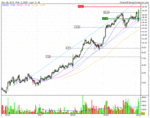You are using an out of date browser. It may not display this or other websites correctly.
You should upgrade or use an alternative browser.
You should upgrade or use an alternative browser.
INDUTRADE ACQUIRES GERMAN SUPPLIER OF AUTOMATION SOLUTIONS
2020-01-13
Indutrade has on 10 January signed an agreement with the intent to acquire all of the shares in the German company STEIN Automation GmbH & Co. KG (www.stein-automation.de/wp/en/), with annual sales of approximately EUR 10 million. The agreement was signed after the market closed.
Stein Automation is a supplier of Pallet transfer systems for assembly-lines. The systems are Industry 4.0-ready and built up by standardized modules, providing flexible configuration and re-modelling features, to optimize the customers' production processes. The customers are companies primarily based in Germany, often with international production facilities, within the automotive, consumer goods and medical industries. Application areas are found in various assembly-line pallet transfer systems for e.g. white goods, electronics and automotive products. Stein Automation, established in 1969, has 45 employees and is based in Villingen-Schwenningen, Germany.
The acquisition is conditional upon approval by the German Competition Authority, and closing is expected to be finalised in February 2020. Stein Automation will be included in Indutrade's Business Area DACH.
The acquisition is expected to have a marginally positive impact on Indutrade's earnings per share.
 www.indutrade.com
www.indutrade.com
2020-01-13
Indutrade has on 10 January signed an agreement with the intent to acquire all of the shares in the German company STEIN Automation GmbH & Co. KG (www.stein-automation.de/wp/en/), with annual sales of approximately EUR 10 million. The agreement was signed after the market closed.
Stein Automation is a supplier of Pallet transfer systems for assembly-lines. The systems are Industry 4.0-ready and built up by standardized modules, providing flexible configuration and re-modelling features, to optimize the customers' production processes. The customers are companies primarily based in Germany, often with international production facilities, within the automotive, consumer goods and medical industries. Application areas are found in various assembly-line pallet transfer systems for e.g. white goods, electronics and automotive products. Stein Automation, established in 1969, has 45 employees and is based in Villingen-Schwenningen, Germany.
The acquisition is conditional upon approval by the German Competition Authority, and closing is expected to be finalised in February 2020. Stein Automation will be included in Indutrade's Business Area DACH.
The acquisition is expected to have a marginally positive impact on Indutrade's earnings per share.
Press releases
Here you will find all press releases from Indutrade. Both regulatory ones, published in accordance with applicable legal requirements, as well as other press releases.
Indutrade. Thecnical Analysis. Strong BUY
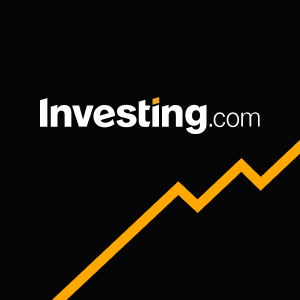

Análisis técnico de Idp Education Ltd (IEL) - Investing.com
Acceda al análisis técnico de Idp Education Ltd, un resumen de las señales de compra/venta de los principales indicadores para las acciones de Idp Education Ltd (IEL).
es.investing.com
Attachments
Grenergy Renovables. Pippenline

 grenergy.eu
grenergy.eu

Key Projects
Learn about our renewable energy projects, which transform the future with efficient, accessible and responsible solutions for a more sustainable world.
 grenergy.eu
grenergy.eu
GYM Group (LON:GYM) Stock Rating Reaffirmed by Berenberg Bank
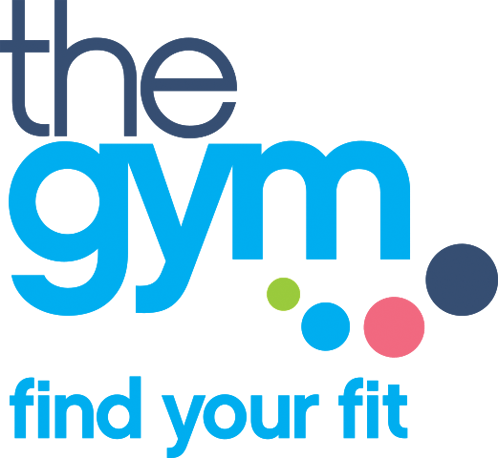
 slatersentinel.com
slatersentinel.com

GYM Share Forecast, Price & News (GYM Group)
Researching GYM Group (LON:GYM) shares? View GYM's share price, price target, dividend, earnings, forecast, insider trades, and news at MarketBeat.
Idp Education


Análisis técnico de Idp Education Ltd (IEL) - Investing.com
Acceda al análisis técnico de Idp Education Ltd, un resumen de las señales de compra/venta de los principales indicadores para las acciones de Idp Education Ltd (IEL).
es.investing.com
Attachments
Northern Star Resources
https://www.proactiveinvestors.com....-significant-gold-systems-in-the-world-909942. html
https://www.proactiveinvestors.com....-significant-gold-systems-in-the-world-909942. html
Attachments
Indutrade. Strong Buy
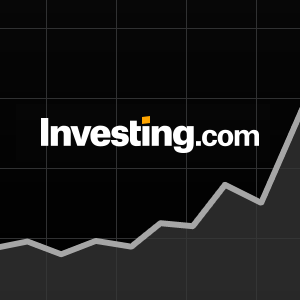
 es.investing.com
es.investing.com

Análisis técnico de Indutrade AB (INDT) - Investing.com
Acceda al análisis técnico de Indutrade AB, un resumen de las señales de compra/venta de los principales indicadores para las acciones de Indutrade AB (INDT).
Idp Education, strong buy


Análisis técnico de Idp Education Ltd (IEL) - Investing.com
Acceda al análisis técnico de Idp Education Ltd, un resumen de las señales de compra/venta de los principales indicadores para las acciones de Idp Education Ltd (IEL).
es.investing.com
Should You Be Excited About Indutrade AB (publ)’s (STO:INDT) 21% Return On Equity?
Simply Wall St January 17, 2020
Many investors are still learning about the various metrics that can be useful when analysing a stock. This article is for those who would like to learn about Return On Equity (ROE). To keep the lesson grounded in practicality, we’ll use ROE to better understand Indutrade AB (publ) (STO:INDT).
Indutrade has a ROE of 21%, based on the last twelve months. That means that for every SEK1 worth of shareholders’ equity, it generated SEK0.21 in profit.
Check out our latest analysis for Indutrade
How Do You Calculate Return On Equity?
The formula for return on equity is:
Return on Equity = Net Profit (from continuing operations) ÷ Shareholders’ Equity
Or for Indutrade:
21% = kr1.5b ÷ kr6.9b (Based on the trailing twelve months to September 2019.)
Most know that net profit is the total earnings after all expenses, but the concept of shareholders’ equity is a little more complicated. It is all earnings retained by the company, plus any capital paid in by shareholders. The easiest way to calculate shareholders’ equity is to subtract the company’s total liabilities from the total assets.
What Does Return On Equity Mean?
Return on Equity measures a company’s profitability against the profit it has kept for the business (plus any capital injections). The ‘return’ is the profit over the last twelve months. That means that the higher the ROE, the more profitable the company is. So, all else being equal, a high ROE is better than a low one. That means ROE can be used to compare two businesses.
Does Indutrade Have A Good ROE?
By comparing a company’s ROE with its industry average, we can get a quick measure of how good it is. Importantly, this is far from a perfect measure, because companies differ significantly within the same industry classification. As is clear from the image below, Indutrade has a better ROE than the average (17%) in the Trade Distributors industry.
That is a good sign. We think a high ROE, alone, is usually enough to justify further research into a company. One data point to check is if insiders have bought shares recently.
How Does Debt Impact Return On Equity?
Most companies need money — from somewhere — to grow their profits. The cash for investment can come from prior year profits (retained earnings), issuing new shares, or borrowing. In the first two cases, the ROE will capture this use of capital to grow. In the latter case, the debt used for growth will improve returns, but won’t affect the total equity. That will make the ROE look better than if no debt was used.
Indutrade’s Debt And Its 21% ROE
While Indutrade does have some debt, with debt to equity of just 0.95, we wouldn’t say debt is excessive. When I see a high ROE, fuelled by only modest debt, I suspect the business is high quality. Conservative use of debt to boost returns is usually a good move for shareholders, though it does leave the company more exposed to interest rate rises.
The Bottom Line On ROE
Return on equity is a useful indicator of the ability of a business to generate profits and return them to shareholders. In my book the highest quality companies have high return on equity, despite low debt. All else being equal, a higher ROE is better.

Simply Wall St
,
Simply Wall St.•January 17, 2020
Today we are going to look at Grenergy Renovables, S.A. (BME:GRE) to see whether it might be an attractive investment prospect. To be precise, we'll consider its Return On Capital Employed (ROCE), as that will inform our view of the quality of the business.
First of all, we'll work out how to calculate ROCE. Second, we'll look at its ROCE compared to similar companies. Last but not least, we'll look at what impact its current liabilities have on its ROCE.
Return On Capital Employed (ROCE): What is it?
ROCE measures the amount of pre-tax profits a company can generate from the capital employed in its business. Generally speaking a higher ROCE is better. Ultimately, it is a useful but imperfect metric. Renowned investment researcher Michael Mauboussin has suggested that a high ROCE can indicate that 'one dollar invested in the company generates value of more than one dollar'.
How Do You Calculate Return On Capital Employed?
Analysts use this formula to calculate return on capital employed:
Return on Capital Employed = Earnings Before Interest and Tax (EBIT) ÷ (Total Assets - Current Liabilities)
Or for Grenergy Renovables:
0.20 = €12m ÷ (€110m - €47m) (Based on the trailing twelve months to June 2019.)
Therefore, Grenergy Renovables has an ROCE of 20%.
Check out our latest analysis for Grenergy Renovables
Does Grenergy Renovables Have A Good ROCE?
One way to assess ROCE is to compare similar companies. Grenergy Renovables's ROCE appears to be substantially greater than the 4.1% average in the Renewable Energy industry. We would consider this a positive, as it suggests it is using capital more effectively than other similar companies. Regardless of the industry comparison, in absolute terms, Grenergy Renovables's ROCE currently appears to be excellent.
Grenergy Renovables has an ROCE of 20%, but it didn't have an ROCE 3 years ago, since it was unprofitable. That implies the business has been improving. The image below shows how Grenergy Renovables's ROCE compares to its industry, and you can click it to see more detail on its past growth.
BME:GRE Past Revenue and Net Income, January 17th 2020
More
When considering this metric, keep in mind that it is backwards looking, and not necessarily predictive. ROCE can be deceptive for cyclical businesses, as returns can look incredible in boom times, and terribly low in downturns. ROCE is, after all, simply a snap shot of a single year. Future performance is what matters, and you can see analyst predictions in our free report on analyst forecasts for the company.
How Grenergy Renovables's Current Liabilities Impact Its ROCE
Short term (or current) liabilities, are things like supplier invoices, overdrafts, or tax bills that need to be paid within 12 months. Due to the way ROCE is calculated, a high level of current liabilities makes a company look as though it has less capital employed, and thus can (sometimes unfairly) boost the ROCE. To check the impact of this, we calculate if a company has high current liabilities relative to its total assets.
Grenergy Renovables has total liabilities of €47m and total assets of €110m. As a result, its current liabilities are equal to approximately 43% of its total assets. Grenergy Renovables's ROCE is boosted somewhat by its middling amount of current liabilities.
Umanis. Very Good financial ratios
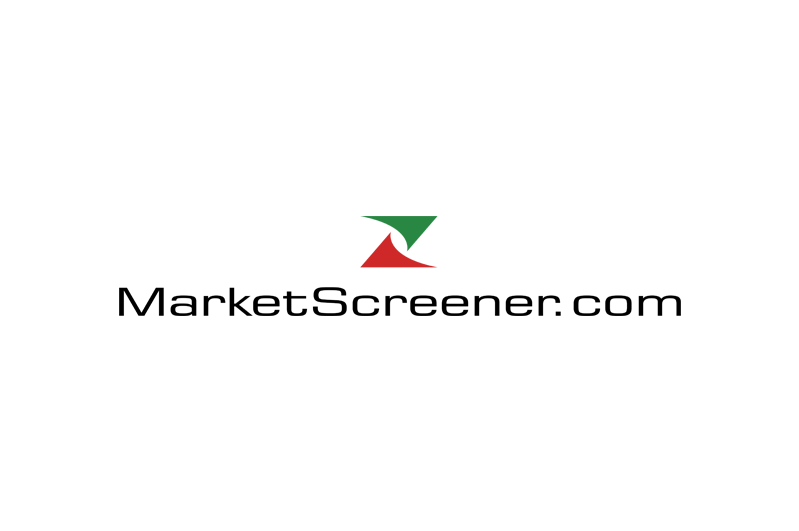
 www.marketscreener.com
www.marketscreener.com

Umanis S.A. Stock (ALUMS) - Quote Euronext Growth Paris- MarketScreener
Umanis S.A. (ALUMS:): Stock quote, stock chart, quotes, analysis, advice, financials and news for Stock Umanis S.A. | Euronext Growth Paris: ALUMS | Euronext Growth Paris
| Beyond Meat stock rallies after Starbucks announces plans for plant-based menu additions MarketWatch Tonya Garcia ,MarketWatch•January 21, 2020 Beyond Meat Inc. stock jumped 8% in Tuesday trading after news from Starbucks Corp. Chief Executive Kevin Johnson that the coffee giant aims to add more plant-based items to its menu. Starbucks stock is nearly unchanged in early trading. Beyond Meat is currently in testing mode with another restaurant giant, McDonald's Corp. , and just announced a supply agreement with pea-protein producer Roquette, which the company said will aid in further scaling of the business. Beyond Meat stock is up 7% over the last three months while the S&P 500 index is up 10.5% for the period. https://finance.yahoo.com/m/b2bc7fd6...k-rallies.html |
Beyond Meat : Denny's Expands Partnership with Beyond Meat® and Launches Popular Plant-Based Beyond Burger®; To celebrate, Denny's will offer FREE Beyond Burgers in participating U.S. and Canadian restaurants on January 30

 www.marketscreener.com
www.marketscreener.com

Beyond Meat : Denny's Expands Partnership with Beyond Meat® and Launches Popular Plant-Based Beyond Burger®; To celebrate, Denny's will offer FREE Beyond Burgers in participating U.S. and Canadian restaurants on January 30
SPARTANBURG, S.C. - After the overwhelmingly successful Beyond Burger® launch exclusively in Los Angeles restaurants, Denny's will now offer the popular plant-based burger made by Beyond Meat® in...
Umanis Good Results.P/E 11
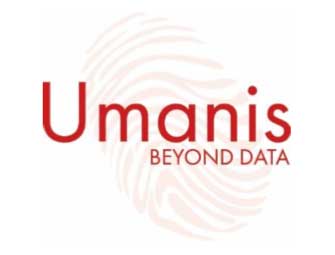
 perelafouine.com
perelafouine.com

Umanis affiche un chiffre d’affaires en progression de 6% en 2020
Sur l’ensemble de l’année 2019, le chiffre d’affaires consolidé s’est établi à 219,2 M€
 perelafouine.com
perelafouine.com
Strong Results, Indutrade
 www.indutrade.com
www.indutrade.com
Press releases
Here you will find all press releases from Indutrade. Both regulatory ones, published in accordance with applicable legal requirements, as well as other press releases.
IDP Education, strong Results

 www.livewiremarkets.com
www.livewiremarkets.com

IDP Education kicking goals
IDP Education (IEL) was the biggest mover on the ASX200 yesterday, gaining 28.4%. The company's 1H20 result release achieved three key goals: First, it exceeded market forecasts by a considerable margin. Secondly, management provided some comfort that the risks presented to earnings from the...
Attachments
Umanis, strong buy


Análisis técnico de Umanis (ALUMS) - Investing.com
Acceda al análisis técnico de Umanis, un resumen de las señales de compra/venta de los principales indicadores para las acciones de Umanis (ALUMS).
es.investing.com
He aquí por qué Goldman Sachs actualizó las acciones de IDP Education para 'comprar'

Daryl Mather
Motley Fool 17 de febrero de 2020

El precio de las acciones de IDP Education Limited (ASX: IEL) tuvo el mejor desempeño en el S & P / ASX 200 (INDEXASX: XJO) la semana pasada, subió un enorme 36,4% y alcanzó un récord. Las acciones de IDP Education se han retirado en el comercio de la mañana y actualmente cotizan 4.04% menos a $ 22.55. IDP Education ofrece servicios de colocación de estudiantes internacionales y servicios de evaluación del idioma inglés. También dirige una serie de escuelas de inglés en el sudeste asiático y organiza eventos educativos y conferencias a nivel mundial.
El cambio de recomendación
El precio de las acciones de IDP cayó un 18% entre el 20 de enero y el 3 de febrero por temor al impacto del coronavirus. Más tarde aumentó un 28% en un día el 12 de febrero después de un informe de ganancias que mostró aumentos con respecto al período calendario anterior (PCP) del 49% en ganancias antes de intereses e impuestos.
El rendimiento de las ganancias de la compañía se debió a mejoras en la generación de ingresos en todas las líneas de negocios y mejoras en el margen. El negocio principal de colocación de estudiantes de IDP experimentó un crecimiento del 30% en volumen principalmente del Reino Unido y Canadá.
La clave para su rentabilidad y crecimiento de ingresos ha sido el rápido lanzamiento de la compañía de su Sistema Internacional de Pruebas del Idioma Inglés (IELTS, por sus siglas en inglés) entregado por computadora en 47 países. Además, se abrieron 37 lugares durante el año fiscal H1.
La actualización de la recomendación de Goldman Sachs se basa en gran medida en el juicio de que la actual crisis de coronavirus no tendrá un impacto "estructural" en el desempeño de los desplazados internos. La compañía ha demostrado que puede manejar el impacto del coronavirus hasta el momento, debido a la diversidad geográfica de sus ubicaciones operativas.
Goldman Sachs estima que la exposición de IDP a China es aproximadamente el 10.9% de los ingresos en un año completo FY20. Estos son ingresos que la compañía ya está reemplazando a través de fuentes de ingresos y en otros mercados.
La propuesta de valor
IDP es una de las verdaderas historias de crecimiento recientes de ASX. En los últimos 4 años, tiene una tasa de crecimiento anual compuesta (CAGR) de 14.2% en ventas, 13.7% en ganancias por acción y 14.8% en flujo de caja.
Con un precio de las acciones (CAGR) del 52.4%, $ 10,000 invertidos en IDP Education el 1 de enero de 2016 habrían valido $ 53,909 el 1 de enero de 2020.
IDP ha demostrado una capacidad muy fuerte para convertir el capital en mayores ingresos con un retorno sobre el capital gastado (ROCE) del 63% en el año fiscal 19 y del 75% en el año fiscal 18.
El modelo de negocio de la compañía significa que el capital gastado resulta en maestros adicionales, recursos de marketing y ventas, y recursos para brindar capacitación y colocación de estudiantes, que son todas unidades generadoras de ingresos de una forma u otra. IDP también posee un tercio de IELTS, proporcionando un flujo de ingresos adicional.
El único problema con las acciones de IDP es el precio de la acción. Actualmente se cotiza a una relación precio / ganancias (P / E) de 71.5. Históricamente, su relación P / E siempre ha sido alta, con el promedio del año fiscal 19 en 46. El mercado y Goldman Sachs han tenido claramente en cuenta el potencial de crecimiento futuro y esperan que la compañía tenga una larga pista por delante.
Comida para llevar tonta
El cambio de recomendación de Goldman Sachs se basó en el crecimiento revelado por IDP en el informe de ganancias H1 de la compañía, que también destacó que el impacto del brote de coronavirus ha sido insignificante hasta ahora.
IDP es una perspectiva de crecimiento muy bien gestionada. El tamaño de su mercado y la administración de la compañía lo han convertido en una máquina de capitalización, subrayada por su desempeño ROCE muy fuerte. Es probable que vea un impacto de FV20 durante todo el año por el coronavirus, pero en esta etapa esto será un efecto a corto plazo.
Con un múltiplo de ganancias de aproximadamente 77, los inversores deberán preguntarse si están de acuerdo con que esta compañía está bien posicionada para continuar su trayectoria de crecimiento en los próximos años.
La publicación Esta es la razón por la cual Goldman Sachs actualizó las acciones de IDP Education para 'comprar' apareció primero en Motley Fool Australia.
https://au.finance.yahoo.com/news/why-goldman-sachs-upgraded-idp-012311938.html

Daryl Mather
Motley Fool 17 de febrero de 2020
El precio de las acciones de IDP Education Limited (ASX: IEL) tuvo el mejor desempeño en el S & P / ASX 200 (INDEXASX: XJO) la semana pasada, subió un enorme 36,4% y alcanzó un récord. Las acciones de IDP Education se han retirado en el comercio de la mañana y actualmente cotizan 4.04% menos a $ 22.55. IDP Education ofrece servicios de colocación de estudiantes internacionales y servicios de evaluación del idioma inglés. También dirige una serie de escuelas de inglés en el sudeste asiático y organiza eventos educativos y conferencias a nivel mundial.
El cambio de recomendación
El precio de las acciones de IDP cayó un 18% entre el 20 de enero y el 3 de febrero por temor al impacto del coronavirus. Más tarde aumentó un 28% en un día el 12 de febrero después de un informe de ganancias que mostró aumentos con respecto al período calendario anterior (PCP) del 49% en ganancias antes de intereses e impuestos.
El rendimiento de las ganancias de la compañía se debió a mejoras en la generación de ingresos en todas las líneas de negocios y mejoras en el margen. El negocio principal de colocación de estudiantes de IDP experimentó un crecimiento del 30% en volumen principalmente del Reino Unido y Canadá.
La clave para su rentabilidad y crecimiento de ingresos ha sido el rápido lanzamiento de la compañía de su Sistema Internacional de Pruebas del Idioma Inglés (IELTS, por sus siglas en inglés) entregado por computadora en 47 países. Además, se abrieron 37 lugares durante el año fiscal H1.
La actualización de la recomendación de Goldman Sachs se basa en gran medida en el juicio de que la actual crisis de coronavirus no tendrá un impacto "estructural" en el desempeño de los desplazados internos. La compañía ha demostrado que puede manejar el impacto del coronavirus hasta el momento, debido a la diversidad geográfica de sus ubicaciones operativas.
Goldman Sachs estima que la exposición de IDP a China es aproximadamente el 10.9% de los ingresos en un año completo FY20. Estos son ingresos que la compañía ya está reemplazando a través de fuentes de ingresos y en otros mercados.
La propuesta de valor
IDP es una de las verdaderas historias de crecimiento recientes de ASX. En los últimos 4 años, tiene una tasa de crecimiento anual compuesta (CAGR) de 14.2% en ventas, 13.7% en ganancias por acción y 14.8% en flujo de caja.
Con un precio de las acciones (CAGR) del 52.4%, $ 10,000 invertidos en IDP Education el 1 de enero de 2016 habrían valido $ 53,909 el 1 de enero de 2020.
IDP ha demostrado una capacidad muy fuerte para convertir el capital en mayores ingresos con un retorno sobre el capital gastado (ROCE) del 63% en el año fiscal 19 y del 75% en el año fiscal 18.
El modelo de negocio de la compañía significa que el capital gastado resulta en maestros adicionales, recursos de marketing y ventas, y recursos para brindar capacitación y colocación de estudiantes, que son todas unidades generadoras de ingresos de una forma u otra. IDP también posee un tercio de IELTS, proporcionando un flujo de ingresos adicional.
El único problema con las acciones de IDP es el precio de la acción. Actualmente se cotiza a una relación precio / ganancias (P / E) de 71.5. Históricamente, su relación P / E siempre ha sido alta, con el promedio del año fiscal 19 en 46. El mercado y Goldman Sachs han tenido claramente en cuenta el potencial de crecimiento futuro y esperan que la compañía tenga una larga pista por delante.
Comida para llevar tonta
El cambio de recomendación de Goldman Sachs se basó en el crecimiento revelado por IDP en el informe de ganancias H1 de la compañía, que también destacó que el impacto del brote de coronavirus ha sido insignificante hasta ahora.
IDP es una perspectiva de crecimiento muy bien gestionada. El tamaño de su mercado y la administración de la compañía lo han convertido en una máquina de capitalización, subrayada por su desempeño ROCE muy fuerte. Es probable que vea un impacto de FV20 durante todo el año por el coronavirus, pero en esta etapa esto será un efecto a corto plazo.
Con un múltiplo de ganancias de aproximadamente 77, los inversores deberán preguntarse si están de acuerdo con que esta compañía está bien posicionada para continuar su trayectoria de crecimiento en los próximos años.
La publicación Esta es la razón por la cual Goldman Sachs actualizó las acciones de IDP Education para 'comprar' apareció primero en Motley Fool Australia.
https://au.finance.yahoo.com/news/why-goldman-sachs-upgraded-idp-012311938.html

